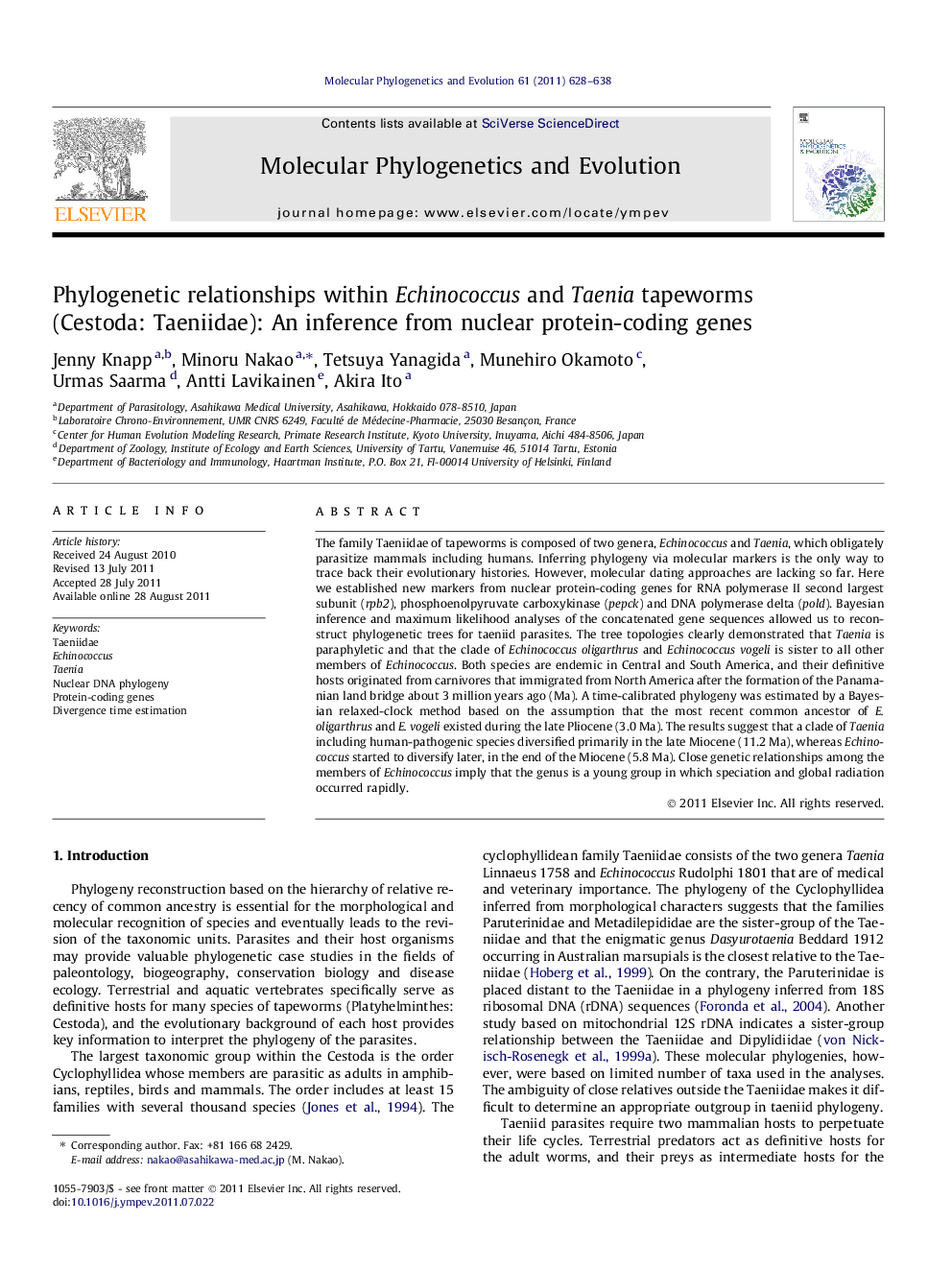| کد مقاله | کد نشریه | سال انتشار | مقاله انگلیسی | نسخه تمام متن |
|---|---|---|---|---|
| 5920602 | 1164297 | 2011 | 11 صفحه PDF | دانلود رایگان |

The family Taeniidae of tapeworms is composed of two genera, Echinococcus and Taenia, which obligately parasitize mammals including humans. Inferring phylogeny via molecular markers is the only way to trace back their evolutionary histories. However, molecular dating approaches are lacking so far. Here we established new markers from nuclear protein-coding genes for RNA polymerase II second largest subunit (rpb2), phosphoenolpyruvate carboxykinase (pepck) and DNA polymerase delta (pold). Bayesian inference and maximum likelihood analyses of the concatenated gene sequences allowed us to reconstruct phylogenetic trees for taeniid parasites. The tree topologies clearly demonstrated that Taenia is paraphyletic and that the clade of Echinococcus oligarthrus and Echinococcus vogeli is sister to all other members of Echinococcus. Both species are endemic in Central and South America, and their definitive hosts originated from carnivores that immigrated from North America after the formation of the Panamanian land bridge about 3 million years ago (Ma). A time-calibrated phylogeny was estimated by a Bayesian relaxed-clock method based on the assumption that the most recent common ancestor of E. oligarthrus and E. vogeli existed during the late Pliocene (3.0Â Ma). The results suggest that a clade of Taenia including human-pathogenic species diversified primarily in the late Miocene (11.2Â Ma), whereas Echinococcus started to diversify later, in the end of the Miocene (5.8Â Ma). Close genetic relationships among the members of Echinococcus imply that the genus is a young group in which speciation and global radiation occurred rapidly.
Highlights⺠A novel phylogeny of taeniid tapeworms was made from nuclear protein-coding genes. ⺠The genus Echinococcus is monophyletic but the genus Taenia is paraphyletic. ⺠Echinococcus is a young group in which speciation had occurred rapidly.
Journal: Molecular Phylogenetics and Evolution - Volume 61, Issue 3, December 2011, Pages 628-638